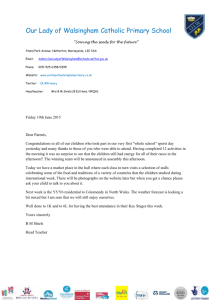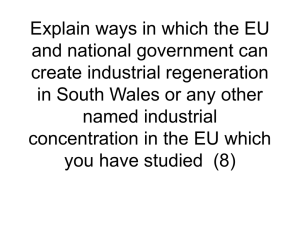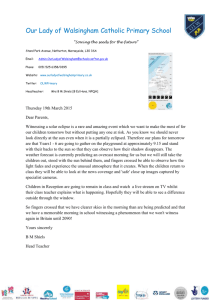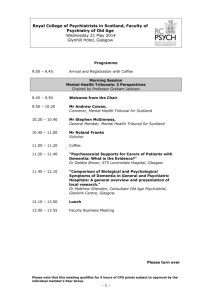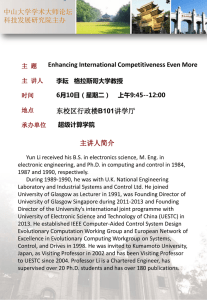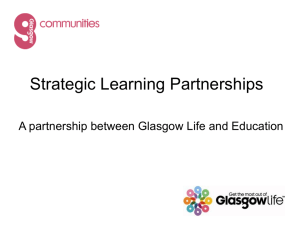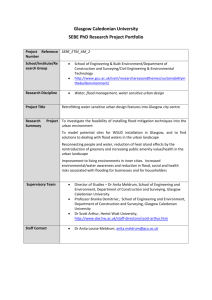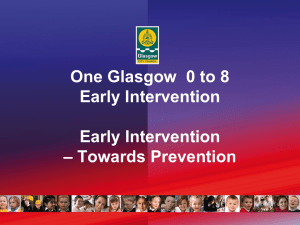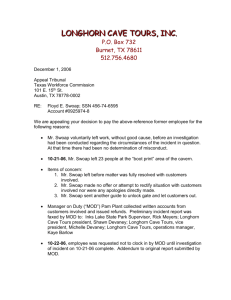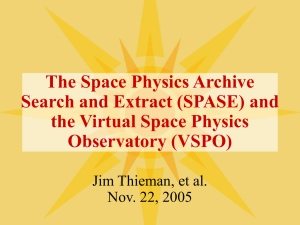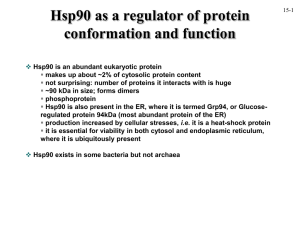Case Study Exemplars - University of Glasgow
advertisement
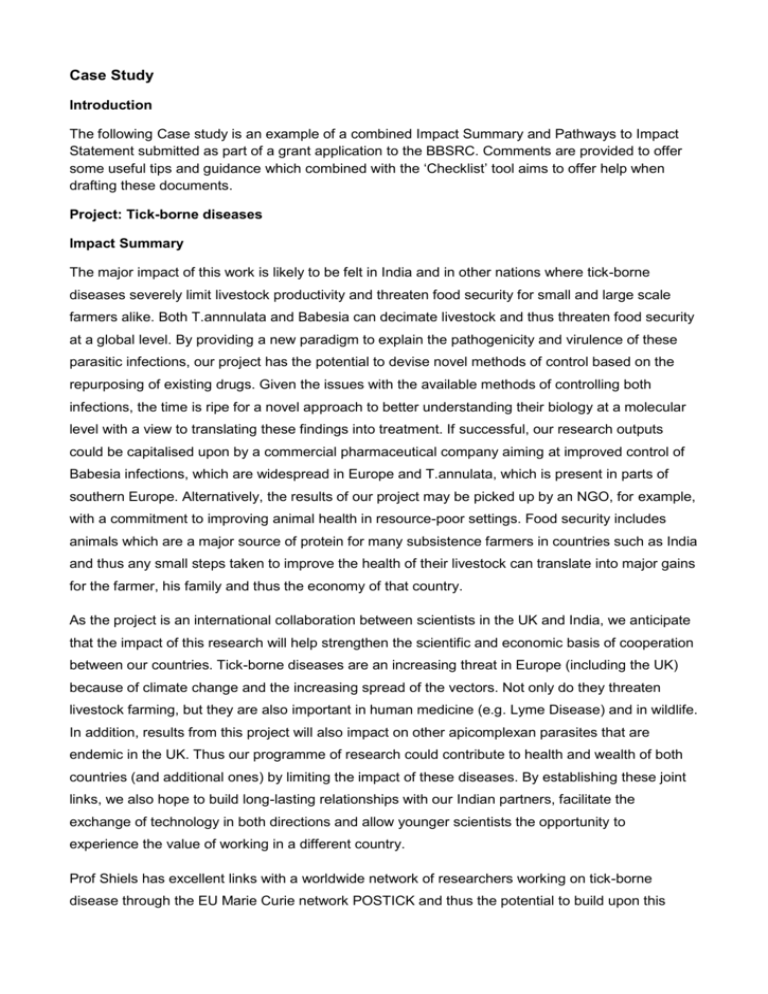
Case Study Introduction The following Case study is an example of a combined Impact Summary and Pathways to Impact Statement submitted as part of a grant application to the BBSRC. Comments are provided to offer some useful tips and guidance which combined with the ‘Checklist’ tool aims to offer help when drafting these documents. Project: Tick-borne diseases Impact Summary The major impact of this work is likely to be felt in India and in other nations where tick-borne diseases severely limit livestock productivity and threaten food security for small and large scale farmers alike. Both T.annnulata and Babesia can decimate livestock and thus threaten food security at a global level. By providing a new paradigm to explain the pathogenicity and virulence of these parasitic infections, our project has the potential to devise novel methods of control based on the repurposing of existing drugs. Given the issues with the available methods of controlling both infections, the time is ripe for a novel approach to better understanding their biology at a molecular level with a view to translating these findings into treatment. If successful, our research outputs could be capitalised upon by a commercial pharmaceutical company aiming at improved control of Babesia infections, which are widespread in Europe and T.annulata, which is present in parts of southern Europe. Alternatively, the results of our project may be picked up by an NGO, for example, with a commitment to improving animal health in resource-poor settings. Food security includes animals which are a major source of protein for many subsistence farmers in countries such as India and thus any small steps taken to improve the health of their livestock can translate into major gains for the farmer, his family and thus the economy of that country. As the project is an international collaboration between scientists in the UK and India, we anticipate that the impact of this research will help strengthen the scientific and economic basis of cooperation between our countries. Tick-borne diseases are an increasing threat in Europe (including the UK) because of climate change and the increasing spread of the vectors. Not only do they threaten livestock farming, but they are also important in human medicine (e.g. Lyme Disease) and in wildlife. In addition, results from this project will also impact on other apicomplexan parasites that are endemic in the UK. Thus our programme of research could contribute to health and wealth of both countries (and additional ones) by limiting the impact of these diseases. By establishing these joint links, we also hope to build long-lasting relationships with our Indian partners, facilitate the exchange of technology in both directions and allow younger scientists the opportunity to experience the value of working in a different country. Prof Shiels has excellent links with a worldwide network of researchers working on tick-borne disease through the EU Marie Curie network POSTICK and thus the potential to build upon this strategic partnership to enhance knowledge exchange and cooperation. Prof Devaney is a member of the management committee of SPASE (Strategic Partnership for Animal Science Excellence) funded by the Rural and Environment Science and Analytical Services (RESAS) Division of the Scottish Government which seeks to put bioscience research on animal health and welfare in Scotland firmly on the global map. Through SPASE we interact with a variety of external stakeholders including Pharma, representatives of the farming/agricultural industry, and Government, as well as researchers in other Institutes and Universities. Moreover, Knowledge Exchange and Impact is recognised as increasingly important at the University of Glasgow where a new KE and Impact strategy has recently been launched which aims to help researchers communicate their findings more widely and interact with a range of stakeholders so that the benefit of research and training carried out at Glasgow is maximised. Pathways to Impact Statement Academic beneficiaries will be engaged by open access publications in peer-reviewed journals, scientific meetings and the web. For example, novel Hsp90 client proteins will be deposited in the Hsp90 client protein database curated by the Picard laboratory (http://www.picard.ch/downloads). All recent publications from both the Devaney and Shiels laboratories have been open access and deposited in the University of Glasgow Enlighten database http://eprints.gla.ac.uk/. We would expect that one or more presentations will be delivered yearly at national/international meetings. Relevant meetings include British Society for Parasitology, World Association for Veterinary Parasitology or specific Hsp90 meetings. These publications/presentations will be important for disseminating specific discoveries and technical advances that directly result from the proposed research. Beneficiaries in the agricultural/farming industry will be made aware of the work though existing contacts with Levy Boards, members of the agricultural industry, pharmaceutical industry, Scottish government agencies and various other stakeholders. Prof Devaney meets with various representatives of such agencies through her membership of the management committee of SPASE (Strategic Partnership for Animal Science Excellence) funded by the Rural and Environment Science and Analytical Services (RESAS) Division of the Scottish Government, which seeks to strengthen bioscience research on animal health and welfare in Scotland. Prof Shiels is a member of the POSTICK consortium, an EU network for capacity building funded through the Marie Curie Action of FP7. Through this network he interacts with scientists interested in tickborne disease worldwide and is involved in training the next generation of researchers. The University of Glasgow is keen to promote research findings to the public, particularly where there are benefits to human and animal health and welfare and where could be commercial application of new research and has recently published an updated impact and knowledge exchange strategy to maximize the impact of research undertaken at the University. Major grant successes and results of significance are communicated to the University Media Relations Office and where appropriate are highlighted on the public access home page of the University web site. The Hsp90 work from both the Devaney and Tatu labs has featured in a special article in Nature Medicine (Heat Shock and Awe) following interviews with a scientific journalist. Scientific conferences (e.g. International Congress of Parasitology) promote new research to the public by organising open access sessions as part of the scientific meeting and, if appropriate, there will be the opportunity to present findings to the public. Both UK applicants have experience of participating in University Open Days, when aspects of our research and teaching are discussed with the public. ED participates in several outreach events aimed at the general public or school children (examples are Science Week and running a parasitology lab for 5/6th year school students in the evening) and both Glasgow PIs have hosted visits from school children in their laboratories. In addition, Devaney has given public lectures, such as a recent contribution to the David Livingstone bicentenary celebrations, where work on parasitic nematodes was presented to an audience of school children, and members of the public.
